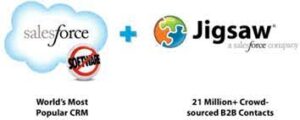Amidst the unprecedented challenges faced by organizations worldwide, many are swiftly enacting their business continuity plans to mitigate operational disruptions.
Unquestionably, a cornerstone of these plans is data protection and recovery, especially for companies reliant on Salesforce for critical data storage. The potential impact of data loss or compromise on business operations cannot be overstated and could reverberate throughout the entire organization.
Despite the current global situation, it’s essential to recognize that the majority of Salesforce data loss incidents aren’t tied to major disasters. Instead, they often stem from everyday mishaps. The key is to anticipate these incidents and implement robust recovery strategies.
Let’s examine the top four causes of data loss in Salesforce, as revealed by insights gathered from 2,000 Salesforce customers:
Human Error:
- Accounting for nearly half of all data loss incidents, human error can occur due to excessive administrator permissions, leading to inadvertent data loss or corruption. For instance, a new Salesforce admin accidentally overwrote critical data within a production org. Fortunately, swift detection via monitoring tools enabled prompt recovery.
Integration Errors:
- Approximately 8% of data loss incidents stem from integration errors, wherein changes made to configurations or default settings result in unintended consequences. For example, a security software integration inadvertently altered all Salesforce usernames, necessitating rapid restoration.
Migration Errors:
- Migration processes, while essential for data movement and system transitions, pose a risk of data loss, as seen in a financial services provider’s near-loss of critical attachments during a Lightning migration. Timely anomaly detection facilitated swift remediation.
Bad Code:
- Poorly tested code deployed by developers or administrators can wreak havoc on data integrity, affecting multiple objects within Salesforce. For instance, erroneous code in a loan interest rate calculation trigger could lead to widespread data corruption, impacting various customer documents.
The repercussions of data loss within an organization are far-reaching, encompassing increased labor costs, reputational damage, revenue loss, and compliance fines. Moreover, the longer Salesforce data remains inaccessible, the greater the risk and costs associated with data loss.
To safeguard against such risks, a comprehensive backup and recovery solution is imperative. While native options like the Recycle Bin or Weekly Export offer limited capabilities, a proactive approach, such as leveraging Salesforce AppExchange partner solutions like Own, significantly enhances data protection and recovery readiness.
In conclusion, while Salesforce ensures robust platform security and availability, data protection ultimately rests with the end user. As Salesforce discontinues its last-resort data recovery service, organizations must prioritize proactive backup and recovery practices to safeguard critical data and maintain business continuity effectively. Explore comprehensive solutions like Own to bolster your data protection efforts and mitigate the impact of potential data loss incidents.













